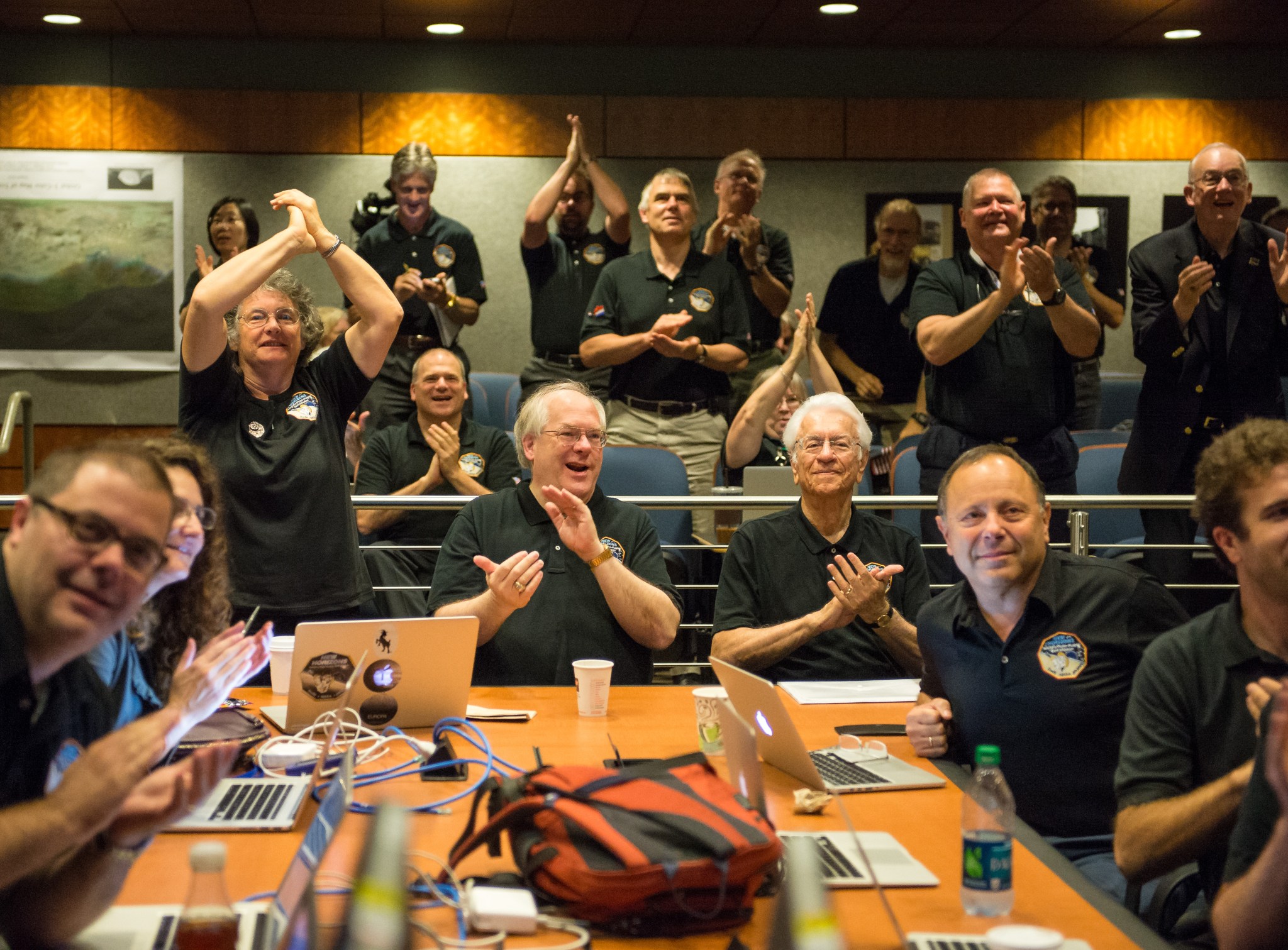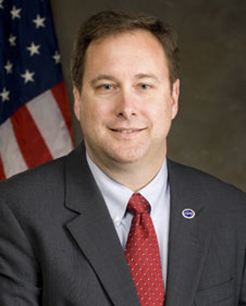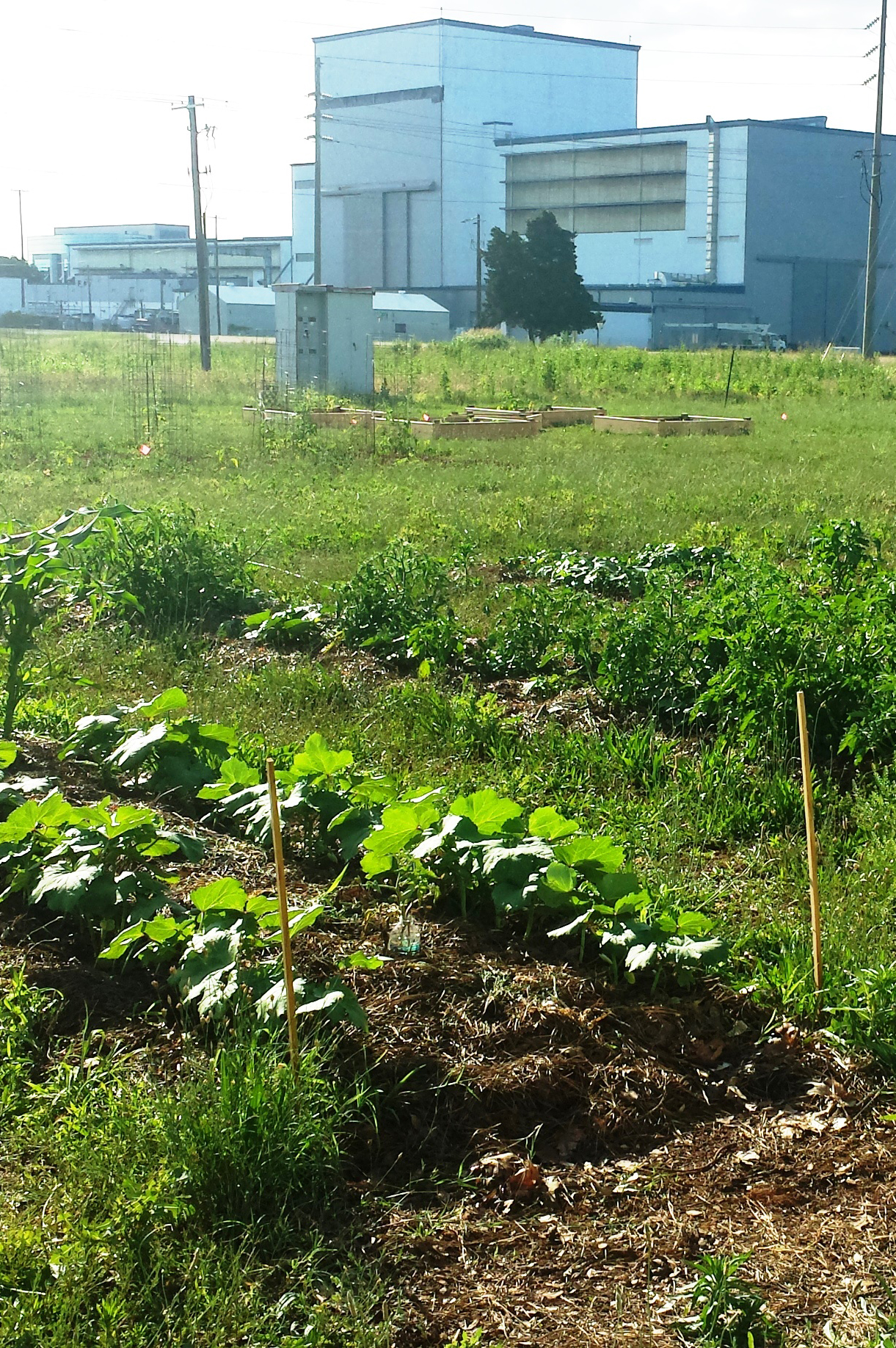In This Week’s Star
- NASA’s Three-Billion-Mile Journey to Pluto Reaches Historic Encounter
- NASA’s First Spacecraft to Pluto Wows Crowds at the U.S. Space & Rocket Center
- NASA, Marshall Center Present Honor Awards to More Than 300 Team Members
- NASA Associate Administrator Lightfoot to Keynote Marshall Association Luncheon July 28
- NASA FIRST Team ‘Plants Seeds’ for Marshall’s First Community Garden
- Marshall Child Development Center Celebrates 25th Anniversary
- Obituaries
NASA’s Three-Billion-Mile Journey to Pluto Reaches Historic Encounter
NASA’s New Horizons spacecraft is at Pluto.
After a decade-long journey through our solar system, New Horizons made its closest approach to Pluto July 14, about 7,750 miles above the surface — roughly the same distance from New York to Mumbai, India — making it the first-ever space mission to explore a world so far from Earth.
“I’m delighted at this latest accomplishment by NASA, another first that demonstrates once again how the United States leads the world in space,” said John Holdren, assistant to the President for Science and Technology and director of the White House Office of Science and Technology Policy. “New Horizons is the latest in a long line of scientific accomplishments at NASA, including multiple missions orbiting and exploring the surface of Mars in advance of human visits still to come; the remarkable Kepler mission to identify Earth-like planets around stars other than our own; and the DSCOVR satellite that soon will be beaming back images of the whole Earth in near real-time from a vantage point a million miles away. As New Horizons completes its flyby of Pluto and continues deeper into the Kuiper Belt, NASA’s multifaceted journey of discovery continues.”
“The exploration of Pluto and its moons by New Horizons represents the capstone event to 50 years of planetary exploration by NASA and the United States,” said NASA Administrator Charles Bolden. “Once again we have achieved a historic first. The United States is the first nation to reach Pluto, and with this mission has completed the initial survey of our solar system, a remarkable accomplishment that no other nation can match.”
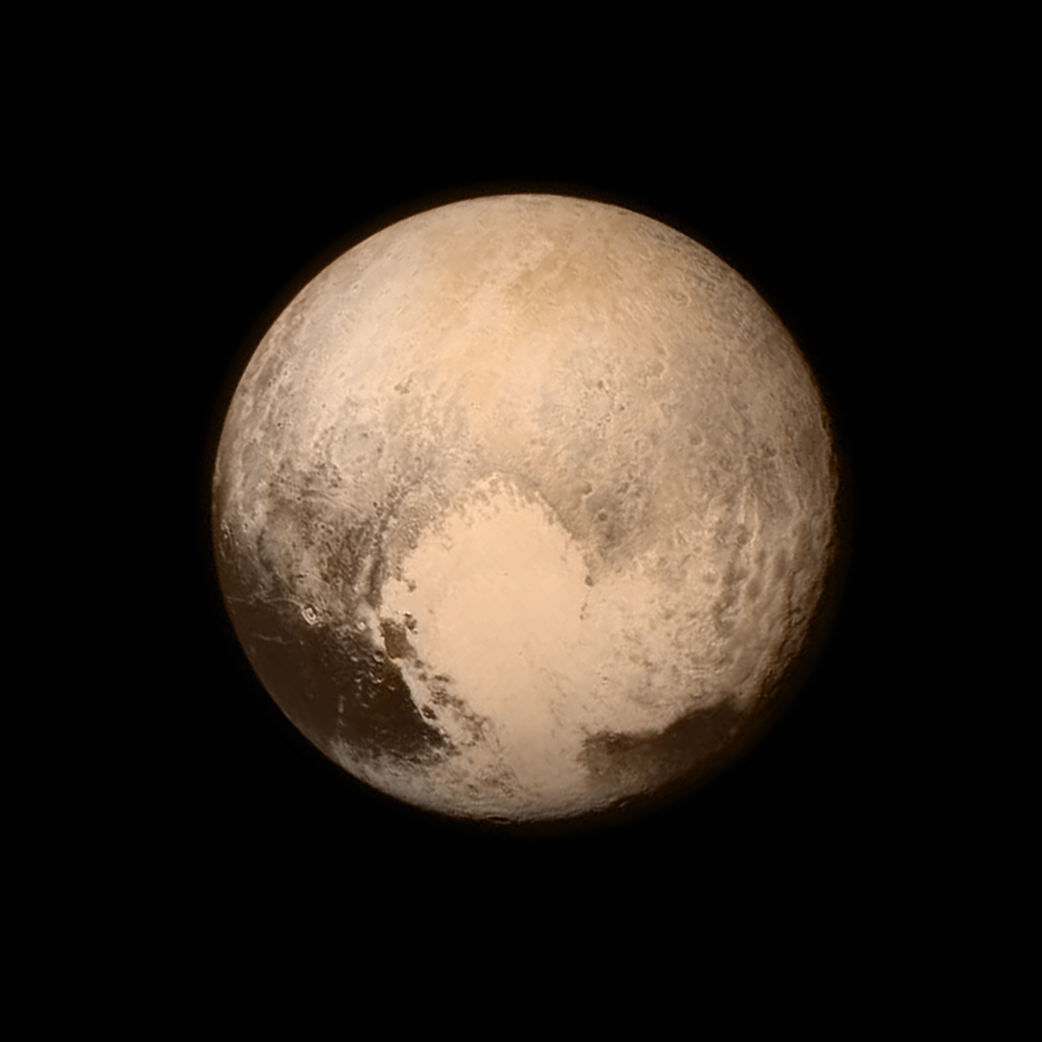
This view is dominated by the large, bright feature informally named the “heart,” which measures approximately 1,000 miles (1,600 kilometers) across. The heart borders darker equatorial terrains, and the mottled terrain to its east (right) are complex. However, even at this resolution, much of the heart’s interior appears remarkably featureless—possibly a sign of ongoing geologic processes. Credits: NASA/APL/SwRI
After sending the image July 14, New Horizons entered data-gathering mode and did not contact flight controllers at the Johns Hopkins University Applied Physical Laboratory for hours. Just after 8:30 p.m. CDT, the spacecraft “phoned home,” transmitting to Earth a series of status updates that indicated it had survived the flyby and is in good health.
The Pluto story began only a generation ago when young Clyde Tombaugh was tasked to look for Planet X, theorized to exist beyond the orbit of Neptune. He discovered a faint point of light that we now see as a complex and fascinating world.
“Pluto was discovered just 85 years ago by a farmer’s son from Kansas, inspired by a visionary from Boston, using a telescope in Flagstaff, Arizona,” said John Grunsfeld, associate administrator for NASA’s Science Mission Directorate. “Today, science takes a great leap observing the Pluto system up close and flying into a new frontier that will help us better understand the origins of the solar system.”
New Horizons’ flyby of the dwarf planet and its five known moons is providing an up-close introduction to the solar system’s Kuiper Belt, an outer region populated by icy objects ranging in size from boulders to dwarf planets. Kuiper Belt objects, such as Pluto, preserve evidence about the early formation of the solar system.
New Horizons principal investigator Alan Stern of the Southwest Research Institute in Boulder, Colorado, says the mission now is writing the textbook on Pluto.
“The New Horizons team is proud to have accomplished the first exploration of the Pluto system,” Stern said. “This mission has inspired people across the world with the excitement of exploration and what humankind can achieve.”
New Horizons’ almost 10-year, three-billion-mile journey to closest approach at Pluto took about one minute less than predicted when the craft was launched in January 2006. The spacecraft threaded the needle through a 36-by-57-mile (60-by-90 kilometer) window in space — the equivalent of a commercial airliner arriving no more off target than the width of a tennis ball.
Because New Horizons is the fastest spacecraft ever launched — hurtling through the Pluto system at more than 30,000 mph, a collision with a particle as small as a grain of rice could incapacitate the spacecraft. It will take 16 months for New Horizons to send its cache of data — 10 years’ worth — back to Earth.
New Horizons is the latest in a long line of scientific accomplishments at NASA, including multiple rovers exploring the surface of Mars, the Cassini spacecraft that has revolutionized our understanding of Saturn and the Hubble Space Telescope, which recently celebrated its 25th anniversary. All of this scientific research and discovery is helping to inform the agency’s plan to send American astronauts to Mars in the 2030s.
“After nearly 15 years of planning, building, and flying the New Horizons spacecraft across the solar system, we’ve reached our goal,” said project manager Glen Fountain at APL. “The bounty of what we’ve collected is about to unfold.”
APL designed, built and operates the New Horizons spacecraft and manages the mission for NASA’s Science Mission Directorate. The Southwest Research Institute leads the mission, science team, payload operations and encounter science planning. New Horizons is part of NASA’s New Frontiers Program, managed by the agency’s Marshall Space Flight Center.
Follow the New Horizons mission on Twitter and use the hashtag #PlutoFlyby to join the conversation. Live updates also will be available on the mission Facebook page.
For more information on the New Horizons mission, including fact sheets, schedules, video and images, click here.
NASA’s First Spacecraft to Pluto Wows Crowds at the U.S. Space & Rocket Center
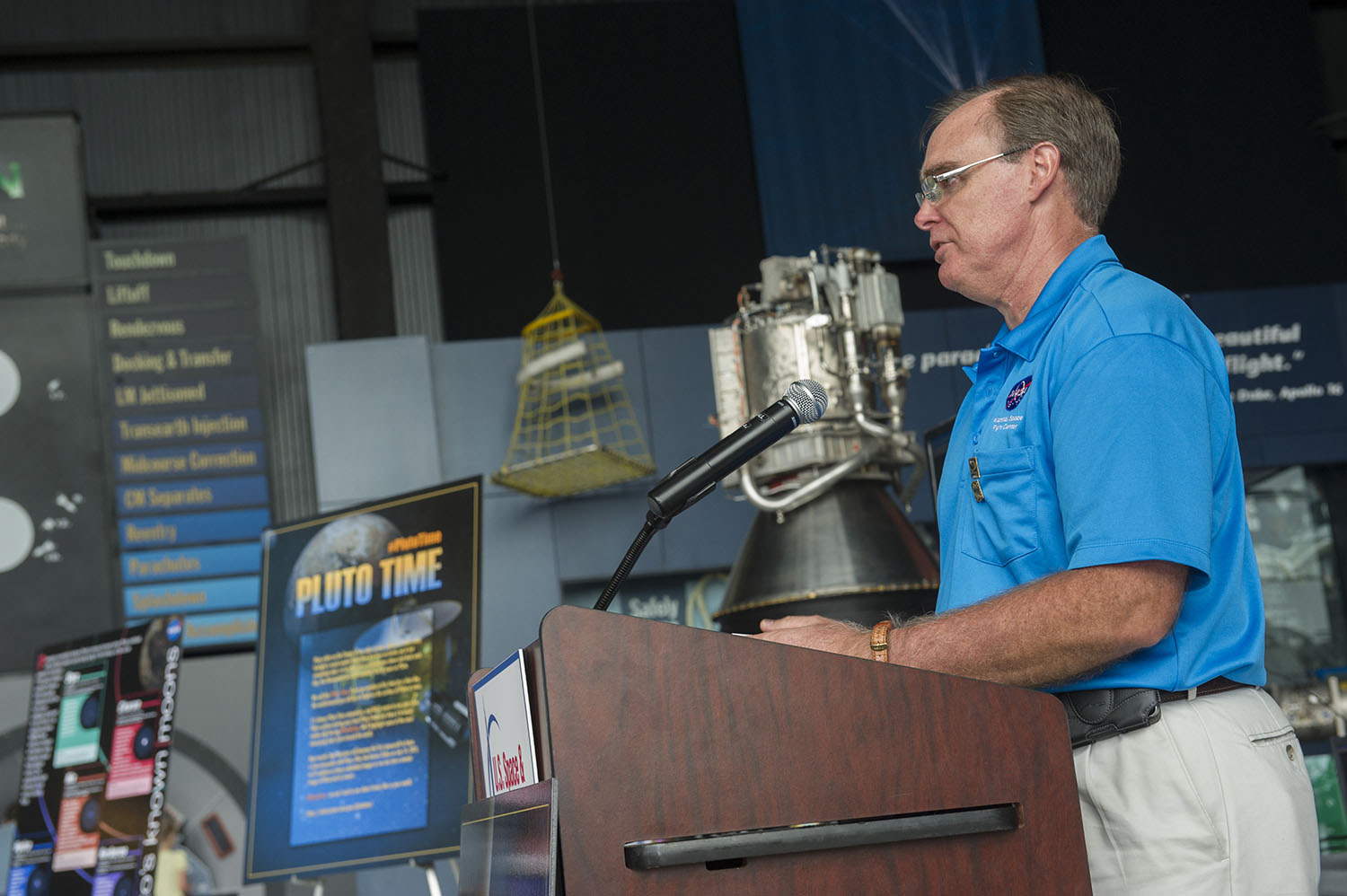
NASA, Marshall Center Present Honor Awards to More Than 300 Team Members
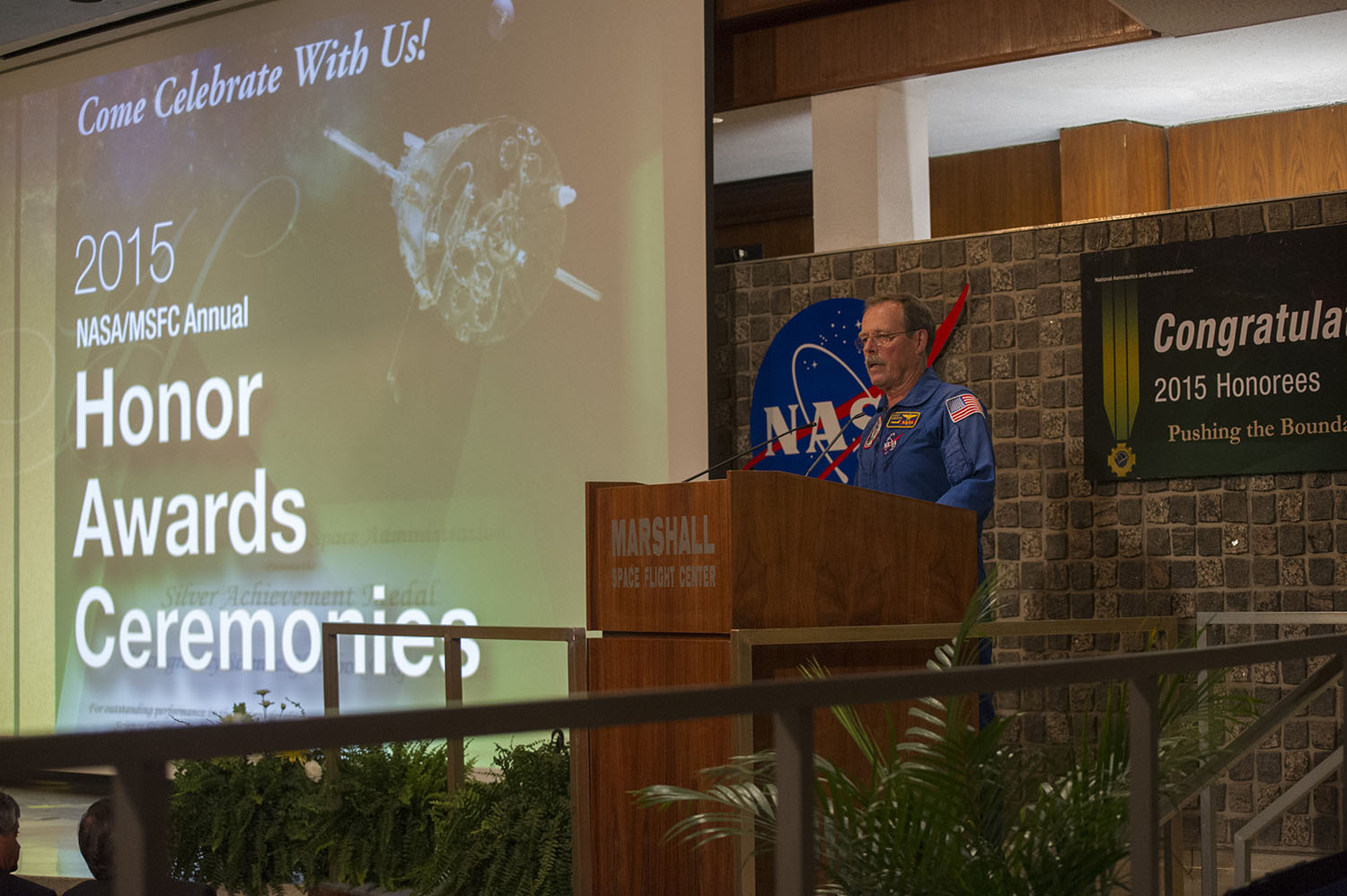
NASA Associate Administrator Lightfoot to Keynote Marshall Association Luncheon July 28
By Molly Porter
The Marshall Association will host a luncheon with NASA Associate Administrator Robert Lightfoot July 28 at NASA’s Marshall Space Flight Center. All Marshall team members are invited to attend.
Lightfoot will share his personal observations on leadership and answer questions from the audience. The event is scheduled from 11:30 a.m. to 1 p.m. at the Marshall Activities Building, 4316.
Lunch, provided by Newk’s, will be $9 for Marshall Association members, $11 for nonmembers and $8 for students. Team members planning to attend must sign up by July 24 using the online registration form. Any cancellations after that date or no-shows will be expected to pay.
The Marshall Association is a professional, employee service organization, which includes Marshall team members and retirees. The association provides informal networking and community-building opportunities for members. Employees interested in joining the association can pay a $25 membership fee can at the door July 28 or contact Denise Smithers at denise.s.smithers@nasa.gov.
For more information about the Marshall Association or the July luncheon, contact Molly Porter at molly.a.porter@nasa.gov.
To learn more about Robert Lightfoot, visit his bio.
NASA FIRST Team ‘Plants Seeds’ for Marshall’s First Community Garden
By Brian C. Massey
Driving around Redstone Arsenal, you see many things you wouldn’t see almost anywhere else. Miles of steam pipes, helicopters, rockets and massive test stands are just a few of the things that are common for NASA’s Marshall Space Flight Center team members as they drive to and from work everyday.
Recently the U.S. Army granted permission to some Marshall team members for something that may be common outside Redstone, but is not as common inside the gates — a community garden.
The Marshall Employee Sustainable Garden, Marshall’s 2014 NASA Foundations of Influence, Relationships, Success and Teamwork team’s project, is the first of its kind for Marshall. NASA FIRST is the agency’s leadership development program for GS 11 and 12 engineers, scientists and administrative professionals. Marshall’s team — Notlim Burgos of the Space Systems Department, Julie Clift, Academic Affairs Office, Mark Henley of the Protective Service Office, Marlon Holt of the Space Systems Department, and Lawrence Jones of the Propulsion Systems Department — chose the employee garden as their project in an effort to promote health and wellness, and to assist with Marshall’s sustainability goals.
The five-acre site, located on Raven Street between Buildings 4631 and 4649, consists of a community garden, employee rental plots and a fruit orchard.
The team also established the MARS Gardening Club with help from the Marshall Exchange. The club will maintain the fruit orchard and three 25-foot-by-4-foot community garden plots — keeping only a small amount of the produce for their own consumption while donating the majority to local food banks and pantries.
Early this month, they harvested some of the first produce from the community garden. The garden’s inaugural crops include corn, tomatoes, okra, zucchini and different types of peppers. A plum tree, apple trees, peach trees and blackberry bushes highlight the orchard.
Marshall team members can rent 20-foot-by-20-foot plots for $15 a year where they can plant crops for their own consumption. The garden features 20 rental plots, with planned expansion to double that number over the next year. Team members can rent multiple plots and are responsible for all maintenance and upkeep.
Team members do not have to be members of the MARS Gardening Club to rent plots, but those interested can join the club for $10 a year. The club has 20 members and has hosts Lunch and Learns with speakers from the Master Gardeners of North Alabama.
“The goals of the garden and the club are pretty simple,” said Holt. “We hope to promote healthier habits while providing team members with a fun quality-of-life benefit. We will also work with the Marshall Green Team to use recyclable materials to further Marshall’s sustainability goals.”
For more information, visit the club’s ExplorNet page or email Marlon Holt.
Massey, an ASRC Federal/Analytical Services employee and the Marshall Star editor, supports the Office of Strategic Analysis & Communications.
Marshall Child Development Center Celebrates 25th Anniversary
By Brian C. Massey
Balloons, popcorn, shaved ice, cotton candy and the ever-present sound of laughing children filled NASA Marshall Space Flight Center’s Child Development Center July 9 for its 25th Anniversary Carnival.
Children, parents, alumni and staff were joined by MCDC Director Kelli Wright; Jennifer Stanfield, MCDC board of directors’ president; Marshall Office of Center Operations Director Roy Malone; and former Marshall Center Director Thomas “Jack” Lee.
Opened in 1990, the child development center provides child care and pre-school services for 128 students and is open to all Marshall team members, as well as the Team Redstone community.
“When this idea was brought to me 25 years ago, I thought it was great and something that would make a great addition for our Marshall team members,” said Lee, who served as Marshall director from 1989 to 1994. “The benefit of having children so close to their parent makes for a good work environment. I could never have envisioned the progress they have made and what they have established from the little thing we started so many years ago.”
“NASA is the number one place to work in the federal government and Marshall is one of the best places to work at NASA,” said Malone. “One of the critical elements that makes NASA and our center such a wonderful place to work is our employee programs — of which the Child Development Center is a star.”
Malone heralded the child development center as a valuable employee benefit that contributes directly to the overall NASA mission in numerous and invaluable ways. “Having a high-quality child care facility helps Marshall attract and retain professionals with infants and young children, reduce employee turnover that might otherwise occur due to pregnancy and maternity leave and helps reduce employee absenteeism that might otherwise occur from child-care issues,” he said.
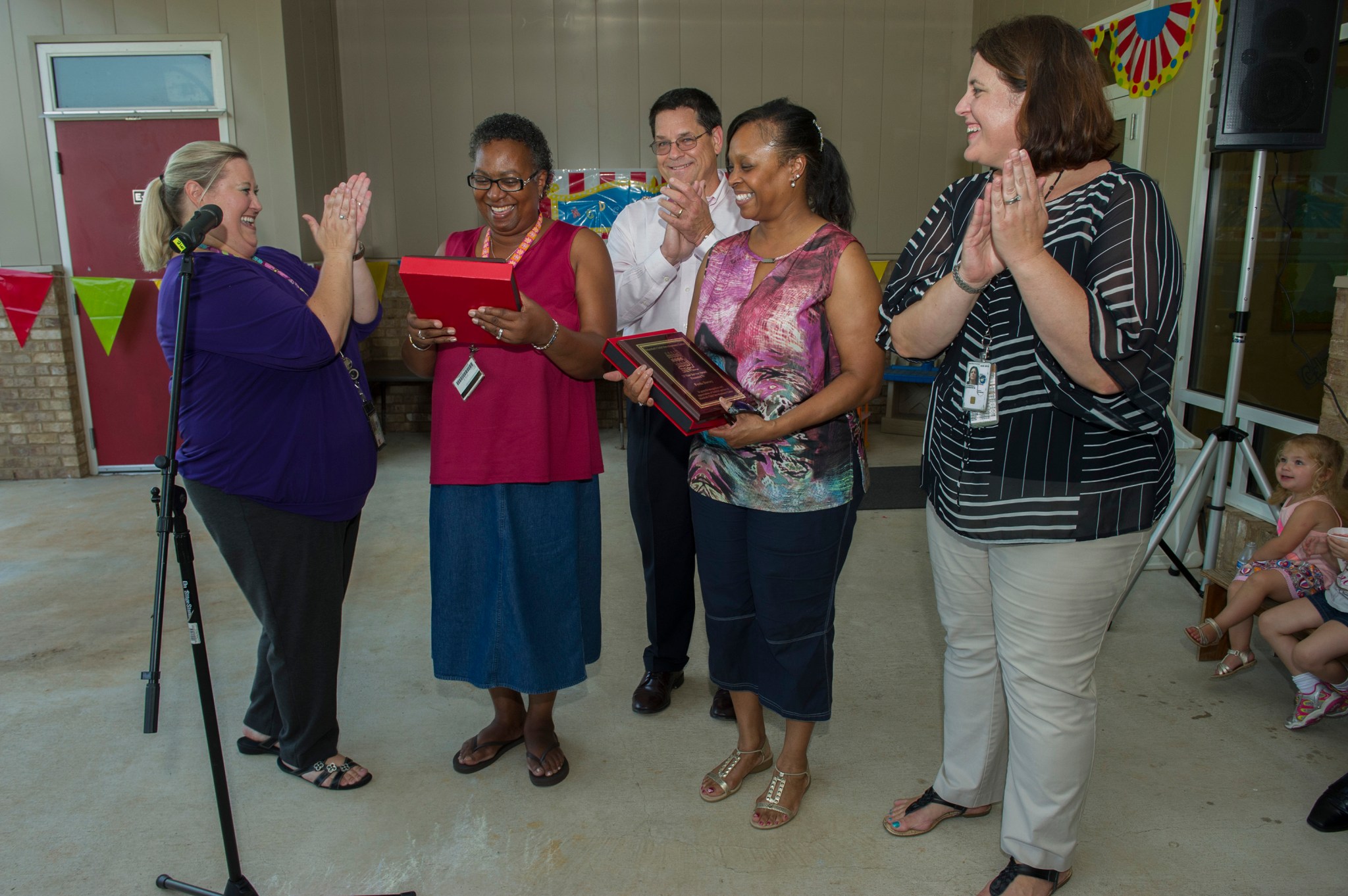
Wright presented longtime staff members Freda Dorsey and Jennifer Steger with plaques in recognition of their 25 years of service. “The core of our success at the center is our teachers,” she said. “They are the ones taking care of our children everyday — watching them grow and helping them learn — and we are really proud of our staff members.”
Working cooperatively with parents and the community, the center’s mission is to provide a safe, stimulating learning environment for young children. It also strives to nurture self-esteem, facilitate social development, foster creativity, encourage self-discipline and self-control and promote language development and cognitive growth.
The Marshall Child Development Center, a 501(c) nonprofit, is administrated by the board of directors, which consists of parent volunteers who solicit input from parents for its operation.
“We, as parents, can feel confident we can go to work and do what we need to do for NASA, Redstone or our companies — we know our children are cared for, taught and loved within these walls” said Stanfield.
To learn more about the Marshall Child Development Center, click here.
Massey, an ASRC Federal/Analytical Services employee and the Marshall Star editor, supports the Office of Strategic Analysis & Communications.
Obituaries
George T. Jarrett, 91, of Ardmore, Tennessee, died July 5. He retired from the Marshall Center in 1974 as an aerospace engineer.
Jack H. Furman, 92, of Huntsville, died July 9. He retired from the Marshall Center in 1978 as an aerospace engineer.
Daniel P. Mellen, 54, of Harvest, Alabama, died July 11. He began working as an aerospace engineer in 1981 at the Marshall Center, where he was still employed at the time of his death.

























